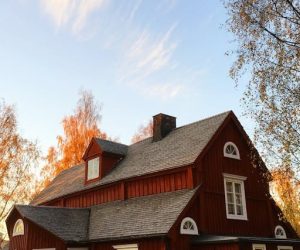Your roof—often out of sight, out of mind, and yet, absolutely crucial to your home’s safety and longevity. It protects against sun, rain, snow, and wind, but over time, the elements take their toll. A well-maintained roof ensures the comfort and integrity of your home. However, the question remains: how do you ensure your roof’s health stands the test of time? In this comprehensive guide, we’re exploring the top six ways to prolong the life of your home’s roof. From proactive measures to savvy maintenance, these strategies are designed to keep a solid roof over your head for decades to come.

Regular Roof Inspections and Maintenance
The key to a long-lasting roof is vigilance. By conducting regular inspections, you can catch problems early before they escalate into costly repairs. Consider hiring a professional roofing contractor to perform a thorough inspection at least once a year. During these sessions, experts can identify issues such as damaged shingles, clogged gutters, or the growth of mold and algae, which, if left unchecked, can significantly reduce your roof’s lifespan. Routine maintenance activities, from clearing debris to sealing leaks, are relatively low-cost solutions compared to the potential damage from neglect.
Invest in Quality Roofing Materials
Every roof, regardless of its size or shape, is only as good as the materials from which it’s made. Investing in high-quality roofing materials is an investment in your home’s future. Premium materials offer better protection and durability, which can significantly extend the life of your roof. Asphalt shingles, for instance, come in various grades with different life expectancies. Opting for the highest grade you can afford pays off in the long run, as they offer better resistance to the effects of UV exposure, temperature changes, and severe weather conditions. Take your time to research and select materials that are both durable and suitable for your climate.
Ensure Proper Roof Ventilation
Adequate ventilation is an often overlooked aspect of roof maintenance. Without it, heat and moisture can accumulate in your attic, leading to a host of issues such as premature aging of shingles, roof deck warping, and the potential for mold growth. If you decide to install a roof vent, be sure to choose a type that complements the design of your home and coordinates with your roofing materials. Ridge vents, soffit vents, and gable vents are popular options, each working in its unique way to promote airflow. Proper installation is key; vents should be placed strategically to prevent pockets of stagnant air, ensuring a well-ventilated attic space.
Protect Against Water and Ice Damage

Water is one of the most persistent threats to a roof. Persistent leaks can lead to rot, and mold, and even compromise the structural integrity of your home. Installing ice and water shield underlayment is an excellent defense against the thaw-freeze cycle that causes most roof leaks. This self-adhering membrane seals around nails and offers a watertight barrier even in the presence of ice dams. In colder climates, it’s also beneficial to add extra insulation in attics to help prevent the occurrence of ice dams in the first place. And don’t forget to keep your gutters clean—proper drainage is essential for preventing water from pooling on your roof.
Control Overhanging Trees
While trees near your home can offer shade and aesthetic value, they also pose a threat to your roof. Long branches can scrape against and damage shingles, especially during windy conditions. Overhanging trees also provide a pathway for pests such as squirrels and raccoons onto your roof. Pruning trees regularly is a simple yet effective way to prevent this damage. It is a good practice to keep branches at least six feet away from your roof to reduce the risk of damage and discourage critters from finding their way onto your property.
Regularly Clean Your Roof
Maintaining a clean roof not only enhances your home’s curb appeal but also extends its longevity. Debris like leaves, twigs, and dirt can trap moisture on your roof, accelerating deterioration. Additionally, the buildup of organic substances like algae can eat away at roofing materials. It’s essential to remove this debris regularly. When cleaning your roof, it’s important to do so safely. Use a stable ladder and consider enlisting the help of a professional if the job requires it. Be cautious with your choice of cleaning solutions, as harsh chemicals can cause damage. Typically, a mixture of water, mild detergent, and a non-metal scrub brush is sufficient for most cleaning needs.
From the initial installation to ongoing upkeep, each step plays a part in the overall health and resilience of your roof. While some strategies may require an initial investment, they can prevent significant costs down the road. A thriving roof not only adds value to your property but peace of mind to your quality of life. Implementing these measures is not just about prolonging your roof’s life—it’s about ensuring the protection and comfort of the whole family.



